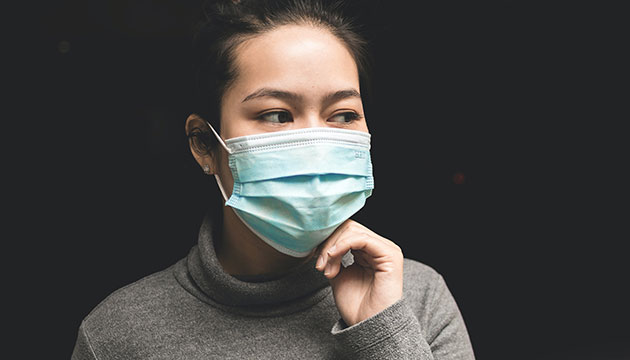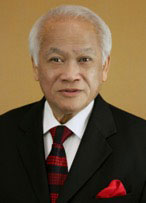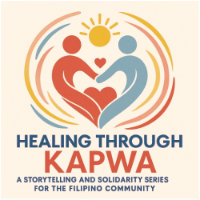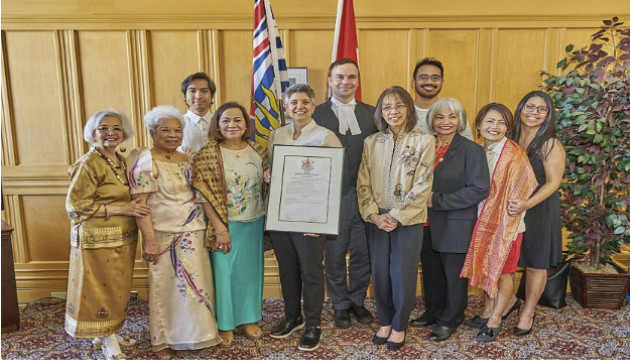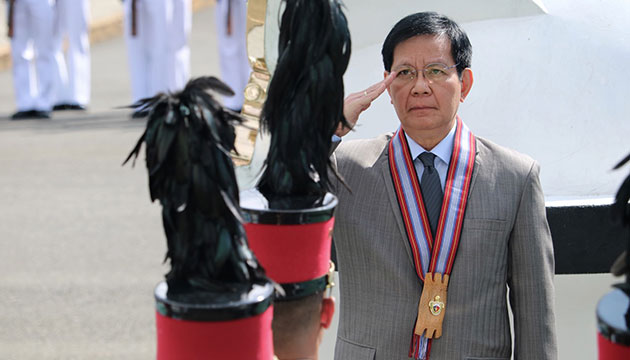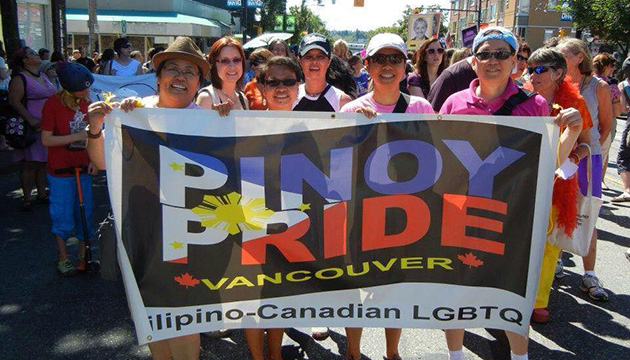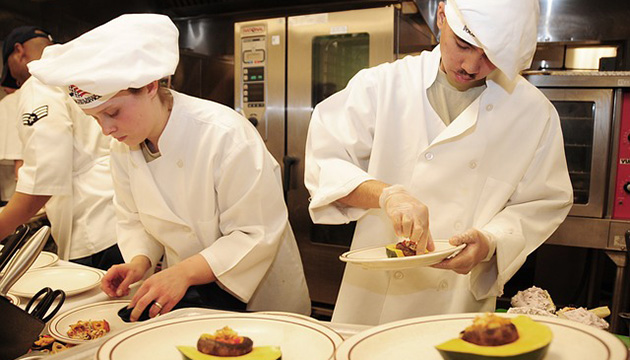(This is Part 20 of Dr. Pagtakhan's column, Medisina at Politika.)
More so now, with vaccines in clear sight, that vigilance on life-saving public health measures, like wearing a face mask, should be sustained. Such measures, by slowing onward community transmission of the COVID virus, would ultimately:
- minimize the number of Canadians falling ill to Covid-19 and losing their lives;
- prevent overwhelming the hospitals and intensive care units; and
- prevent burnout among nurses, doctors, and other frontline health-care workers.
These shall be our collective pledge; these shall propel our collective endeavor as we confront the pandemic resurgence.
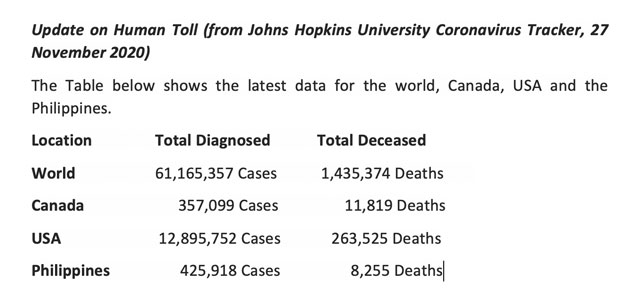
Come Tuesday, December 8, the pandemic will have reached its one-year mark since it started as a cluster of atypical pneumonia of unknown pathogen in Wuhan City, China. Since then, more than 61 million citizens have fallen ill to COVID-19 and nearly a million-and-a-half had died globally.
In the USA - with which Canada shares its longest land border and air space and has maintained reciprocal ban to land travels except for essential purposes since March of this year – total cases are fast approaching 13 million and deaths are now over a quarter of a million. Canada has since had slightly over a third of a million cases and over 11,000 deaths. In the Philippines – the country of birth and/or ancestral home for the Canadian Filipino diaspora and their children and grandchildren – the total patients diagnosed are coming closer to half a million, of whom more than 8,000 had lost their lives.
Contrasting Headlines
The top stories of the past month have coalesced into two contrasting sets of headlines: 1) the worsening pandemic in almost all parts of the world, Canada included; and 2) the imminent arrival, by way of Emergency Use Authorization (EUA), of two vaccines– the Pfizer-GermanBioNTech and Moderna in the US– and possibly a third from OxfordUniversity/AstraZeneca in the United Kingdom.
Vaccines in Sight
Today November 27, Rachel Aiello of CTV News reported on Prime Minister Trudeau’s announcement that “former NATO commander Maj.-Gen. Dany Fortin will be leading Canada’s vaccine distribution efforts.”Yesterday, she reported on the announcement by Health Canada's chief medical adviser Dr. Sharma that approval of the Pfizer-BioNTech vaccine for use in Canada could come “along the same pre-Christmas timeline as the American and European health agencies,” that is, on December 10th. Apparently, the US Food and Drug Administration has scheduled its meeting on the same date to decide whether to give Pfizer’s vaccine the all-clear, with a decision on Moderna to follow soon.
Public Health Measure and Advice
Focus: Notwithstanding the uplifting news on vaccines, the grim headlines on resurgence of cases across Canada and on more restrictive measures ordered by provincial and city governments bring me to underscore the theme I shared in my last Commentary, that is, follow life-saving public health advice as we wait for the anticipated rollout of the vaccines. [I will say more about vaccines and vaccination in the next issues of Canadian Filipino Net.]
Measures: Indeed, we still need in the meantime to physically distance, wash our hands with soap and water frequently or use hand sanitizers, avoid handshakes and touching our face, avoid large gatherings, and wear a face mask.
Science-Based Evidence: Seven studies – observational and epidemiological – validate the efficacy of face masks in reducing 1) the emission of virus-laden droplets, and 2) the inhalation of these droplets by the wearers nearby.
Droplets: The big droplets are heavier, travel a short distance of less than six feet, and fall on surfaces or are inhaled by another person within that distance. The smaller droplets – also called aerosols – are lighter, travel a longer distance, linger in the air for sometime before falling on surfaces or inhaled by another person within the vicinity.
This is the scenario between and among the infected and non-infected persons. It occurs when we attend a concert, participate or listen in a choir, sing, shout or engage in a group or one-to-one private conversation with our family and circle of friends.
Scientific cavalry: Alluding to the news of Pfizer-BioNTech’s and Moderna’s forthcoming applications for emergency use authorization for their vaccines as ‘the cavalry,’ US top and trusted pandemic expert Dr. Anthony Fauci said recently: “If you’re fighting a battle and the cavalry is on the way, you don’t stop shooting; you keep going until the cavalry gets here, and then you might even want to continue fighting.”
Referring a week later to the third vaccine candidate, Oxford University/AstraZeneca, and other therapeutic breakthroughs as the ‘scientific cavalry,’ UK Prime Minister Boris Johnson echoed the same sentiments in similar language: “We can hear the drumming hooves of the cavalry coming over the brow of the hill, but they are not here yet.”
Vaccination and Masks – Unanswered Questions
Dr. Larry Corey – an internationally renowned expert in virology, immunology, and vaccine development, a leader of the COVID-19 Prevention Network, and a Professor of Medicine at University of Washington – in his critique, The Messenger RNA Vaccines and Masks, posted at the Johns Hopkins University Coronavirus Resource Center website (accessed on November 27, 2020) made the following observations and raised the accompanying questions:
- “The vaccine clinical trials are not focused on whether a vaccine prevents someone from getting the virus at all.
- In other words, a COVID-19 vaccine may benefit the individual who gets vaccinated, but the virus may still invade the body and it’s possible that a vaccinated person can still spread the virus to others.
- Will vaccinated persons be asymptomatic carriers who can still transmit throughout their household, their community, their school?
- Will I still have to wear that mask? And the answer to this is: until we know more…yes.
- Do we need to continue to wear masks with other people around, especially casual acquaintances or strangers? At the moment, the answer is still yes until we unravel these issues.”
Let us hope the appropriate study is done.


